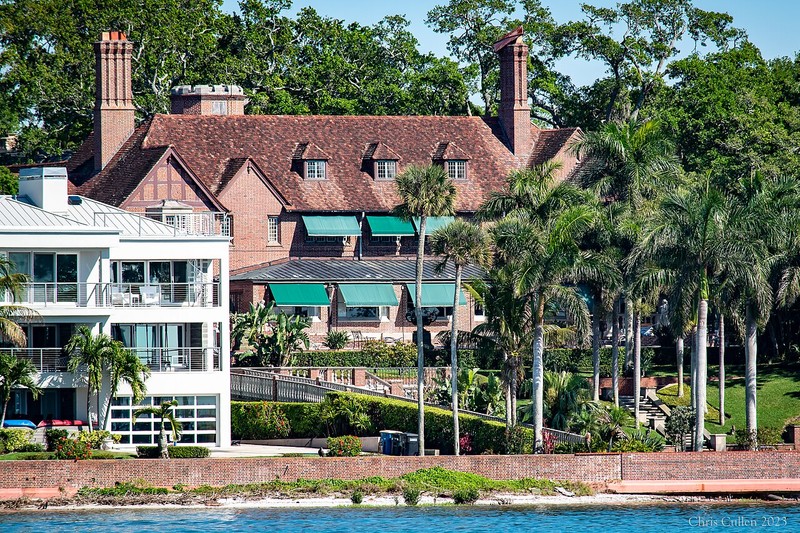Donald Roebling Estate (Spottis Woode)
Introduction
Text-to-speech Audio
Philanthropist, inventor and and industrial engineer Donald Roebling (1908-1959), built this grand Tudor Revival-designed residence in 1929. Roebling was the great-grandson of John A. Roebling, who designed the Brooklyn Bridge in New York City. Roebling's grandfather, Washington A. Roebling, and grandmother, Emily, oversaw the bridge's construction, which took thirteen years to complete. Roebling is also known for inventing an amphibious landing vehicle (amtrac) that was used in World War II. Also known as Spottis Woode, the house features steeply pitched roofs, gables, patterned brickwork laid in Flemish bond, half timbering, and two large chimneys. Inside, the house features elaborate mahogany paneling and carved ceiling beams, decorative plasterwork, carved limestone fireplace mantels, and U-shaped staircase with carved likenesses of the house's designers and craftsmen. The grounds include terraced laws, formal gardens, and several outbuildings, one of which was a machine shop. The house was added to the National Register of Historic Places in 1979 and is a contributing property of the Harbor Oaks Residential District, which is also listed on the register.
Images
The Roebling Estate was built in 1929 and features terraced lawns and formal gardens.

Backstory and Context
Text-to-speech Audio
Donald Roebling was born on November 15, 1908 in New York City and grew up in Bernardsville, New Jersey. Although he came from a family of famous civil engineers, Roebling chose electrical engineering for his career (he attended Bliss Electrical School in Washington, D.C.). He and his wife, Florence Spotswood, moved to Clearwater in 1929 after the house was completed, arriving several months after the Great Lake Okeechobee Hurricane in September 1928. Large tracts of land became covered in water which prevented rescuers from reaching hurricane victims, many of whom died as a result.
After learning of the impact of the hurricane, Roebling concluded that a vehicle capable of traveling on land and water could have saved many people. He built the machine shop and used it to design the amtrac, which was the first tracked landing vehicle. Roebling named it the "Alligator." The U.S. military learned about the invention and bought three prototypes. Impressed, they developed the vehicle further and Navy contracted with Roebling to mass produce it. Amtracs (LVT Mk 1s) were used for the first time in the Solomon Islands in August, 1942. By the end of the war, more than 18,000 of them were built. Roebling, who released the patent rights to the federal government, received the "Award of Merit" for this gesture from President Harry S. Truman in 1946.
In addition to his engineering work, Roebling was a generous philanthropist. Examples of his philanthropic activities include providing the funds to build several wings to the Morton F. Plant Hospital; a hall and gym for the Peace Memorial Presbyterian Church; and a building for local boy scouts. Roebling sold the house in 1956, three years before he died. It remains a private residence and is best seen from the water.
Sources
"Roebling family papers." University of Georgia Special Collections Libraries. Accessed November 20, 2023. https://sclfind.libs.uga.edu/sclfind/view?docId=ead/ms4329.xml.
Rogers, David J. "Donald Roebling and the Origins of the Amphibious Tractor." American Society of Civil Engineers. May 18, 2016. https://ascelibrary.org/doi/10.1061/9780784479841.016.
Wikimedia Commons: https://commons.wikimedia.org/wiki/File:NIK_0353.jpg
